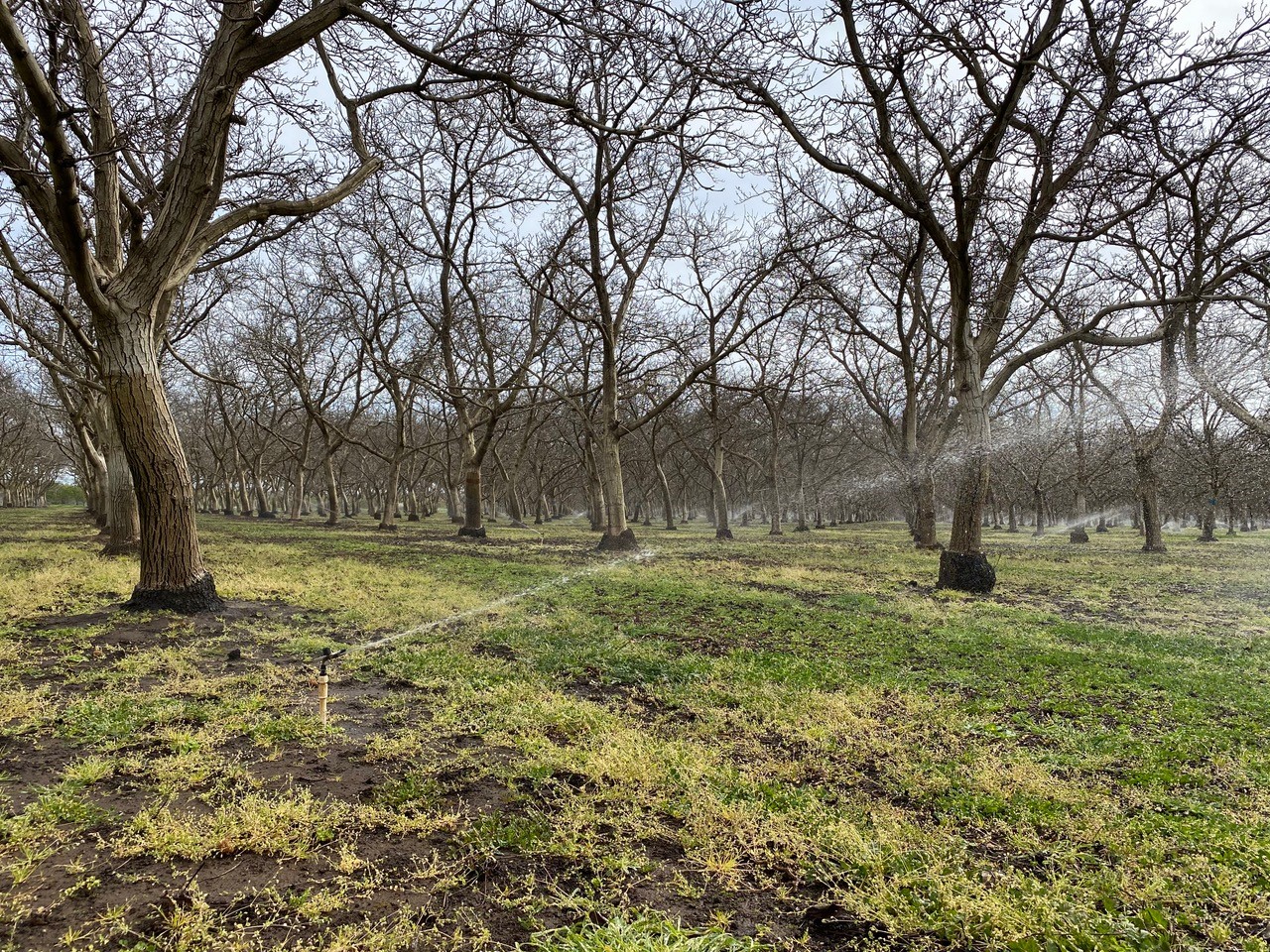
Research into delayed initiation of irrigation in walnut orchards continues to show benefits for tree health. Similar research in almond production, meanwhile, is producing mixed results.
In a MyAgLife podcast with Taylor Chalstrom, UCCE orchard systems advisor Luke Milliron stressed that use of a pressure chamber and waiting until trees are two to four bars drier than a fully watered baseline before irrigating is showing tremendous potential for tree health and has no effect on production.
“Compared to when growers historically started water, this shows waiting weeks or even a month before starting the first irrigation leads to less water stress later in the year. Growers who are adopting this say that the trees look better,” Milliron said.
In years with adequate winter rainfall, delaying irrigation can be done later than you would think, he added. That is not the case with almond trees. Even though they are a drought-tolerant tree, they can move into severe stress at a much faster rate than walnuts.
Milliron explained that the concept of delaying irrigation in walnuts began with UC researchers and UCCE farm advisors noting poor root health in trees later in the season. There was skepticism at first about the delay concept due to the longstanding belief that trees should start the year with a ‘full tank of water.’ That has proved to be the problem because coming out of dormancy is a time of root growth. Saturating the soil with irrigation at that time affects root growth and leads to stress later in the season due to compromised root health.
Orchard soils also play a part in irrigation decisions. As orchards are planted on more marginal ground, use of a pressure chamber to initiate irrigation integrates soil types with water needs.
Applying the same concept in almond production is not showing the same results. Milliron said waiting to irrigate at the same pressure chamber readings as walnuts has the potential to cause production loss in almonds. The threshold studies will continue, he said, and with the use of newer sensing technologies, including direct measurement of stem water potential, a better trigger can be discovered.
Milliron said the research team would be surveying almond growers to see how and when they decide on the timing of the first irrigation and continue to look for a potential for irrigation delay.

Cecilia Parsons
Cecilia Parsons has lived in the Central Valley community of Ducor since 1976, covering agriculture for numerous agricultural publications over the years. She has found and nurtured many wonderful and helpful contacts in the ag community, including the UCCE advisors, allowing for news coverage that focuses on the basics of food production.
She is always on the search for new ag topics that can help growers and processors in the San Joaquin Valley improve their bottom line.
In her free time, Cecilia rides her horse, Holly in ranch versatility shows and raises registered Shetland sheep which she exhibits at county and state fairs during the summer.















